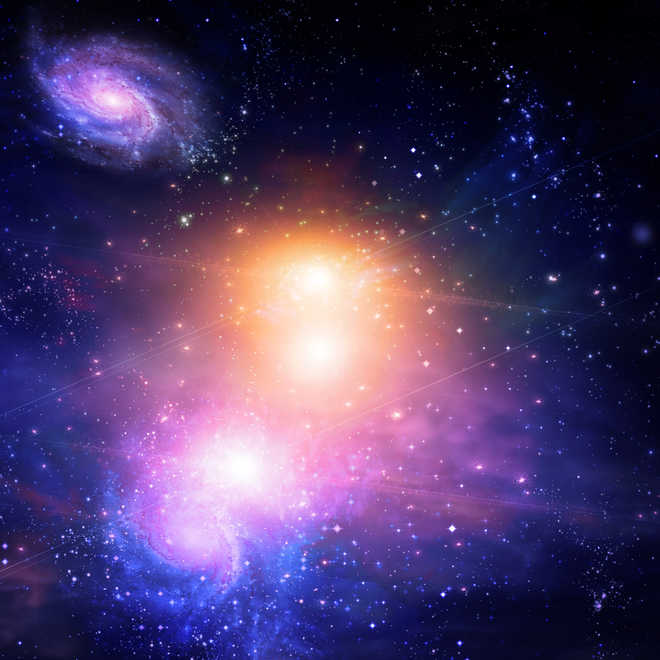
Photo source: Thinkstock
Washington
Scientists have discovered new evidence of stars forming in our Milky Way galaxy, by using a telescope equipped to detect infrared light invisible to our eyes.
The "exciting" finding reveals how stars, including our Sun, grow up within clusters and groups, researchers said.
The team led by Grace Wolf-Chase, astronomer at Adler Planetarium in the US, found huge gas clouds moving outward from areas where "baby" stars are forming, using a new way of disentangling these outflows from other processes in densely-populated stellar nurseries.
These stellar nurseries can produce dozens or even hundreds of stars with different sizes and masses.
"The Sun, though isolated from other stars today, is thought to have formed in a cluster with many other stars, so the environments we are studying can tell us a lot about the origin of our own solar system," said Wolf-Chase.
Stars form when cold, rotating clouds of gas and dust in space are pulled together by gravity into flattened "disks" that spin faster as they shrink, similar to what happens when twirling figure skaters pull their outstretched arms in towards their bodies.
In order for a star to form at the centre of a spinning disk, the rotation of the disk must slow down.
This happens through powerful outflows of gas that are channeled into tight streams, known as "jets".
Jets can span more than 10 trillion miles, even though the disks that launch them are "mere" billions of miles across (comparable to the size of our solar system).
Since planets can form in the disks, the presence of a jet can be a good indicator of a nascent planetary system, even when the disk is not observed directly, researchers said.
Stars more than eight times as massive as the Sun bathe their surroundings in intense ultraviolet radiation that destroys their natal clouds quickly, so it is not clear if these massive stars develop disks and jets similar to stars like the Sun.
The researchers used an instrument called NICFPS (Near- Infrared Camera and Fabry-Perot Spectrometer) on the Astrophysical Research Consortium (ARC) 3.5-metre telescope at the Apache Point Observatory (APO) in New Mexico.
NICFPS peered into 26 dusty clouds thought to be forming clusters containing massive stars.
Using a combination of infrared filters that allowed them to distinguish jets from infant stars from other types of light produced by the radiation in these massive stellar nurseries, they identified 36 jets across 22 of the regions.
The results published in the Astrophysical Journal provide compelling evidence that, like their lower-mass siblings, massive stars also launch powerful jets.
The jet shuts off shortly after radiation from the massive star begins to disrupt its environment. PTI



























